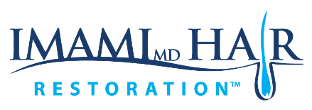Platelet-rich plasma (PRP) is a fluid used to stimulate and improve cell growth. It has a wide array of uses, from healing sports injuries to hair growth, and is being researched for other medical issues like wrinkles.
It is autologous, meaning that it is made from a patient’s own blood. Blood has a lot of stuff in it. You probably know about red blood cells, white blood cells, and plasma. There are also cells called platelets, which start blood clotting and so are important for healing wounds. Once they break down, they release platelet-derived growth factors (PDGF) which help cells heal. PRP has five times as many platelets as normal blood, which accelerates the healing process.
PRP also contains vascular endothelial growth factor (VEGF), transforming growth factor (TGF) and other proteins that help in healing wounds and hair growth.
What does it do?
A local anesthetic is applied to the area of hair loss or the hair transplant. PRP is then injected at the site to prevent hair loss and improve the growth of new hairs. The procedure must be repeated every one to nine months to maintain results. You can expect to see improvement in as little as 2 months.
How is it made?
One to two ounces of blood is drawn from the arm (sorry if you don’t like needles). The blood is placed in a centrifuge, where the solid and liquid parts of the blood are separated. This is how the platelets are isolated, then this part of the plasma is extracted while the rest of the blood is left behind.
Is it Safe?
There are no serious negative side effects with PRP. The few minor (and thankfully rare) side effects are damaged blood vessels, infections, tightness, and minor headaches. Some of these, like infections, are always a possibility with injections, so there’s nothing particularly dangerous about PRP itself.
You might need to avoid anticoagulants and anti-inflammatory drugs like aspirin and ibuprofen. They make it harder for blood to clot, counteracting the clotting (and therefore healing) effects of PRP. Some nutrient intake like omega-3 fatty acids may also need to be stopped.
But, you’ll probably want to eat before having your blood taken to avoid feeling lightheaded. Afterwards, you should avoid washing it for 2 days to allow it to work. The healing process will have swelling, but if you feel any pain, you should inform your doctor.
Does it Work?
For the past decade there has been doubt about PRP. Since it’s been tested for use in many different injuries and conditions, there have been a lot of duds. It helps with healing, specifically for healing torn tendons, reducing pain and increasing mobility for rotator cuff injuries, but it’s not a super-cure. Thankfully the results for hair transplants are better than they are for arthritis.
A study in 2017 analyzed several other studies to see what the consensus was. They found that patients who had PRP did get thicker hairs and more hairs in the affected area, which is a big step in PRP becoming the norm for hair transplants.
In 2020 a similar study was conducted that confirmed that PRP is effective for both hair width and hair density, for both men and women with androgenic alopecia.
Should I get it?
It might not be covered by your insurance, so be sure to check. Since it usually needs multiple sessions, you should be aware of the total cost. If you have a blood condition like anemia, or a low platelet count, then you might not be eligible for PRP. Other conditions like cancer can also be an issue. Dr. Imami will discuss what’s best for your individual case when you first see him.
Read more on PRP here https://www.imamihair.com/prp-with-acell/
To schedule an in person or virtual consultation to see if PRP can help you reach your hair goals click here https://web2.myaestheticspro.com/booknow/index.cfm?238D04982B08B4A8D8E8430F6CE7C255
